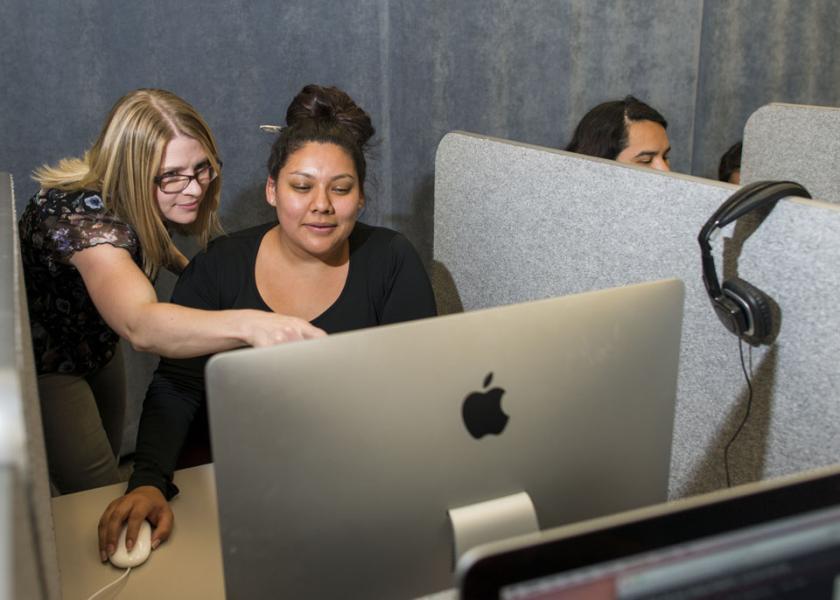The following article is reproduced from CSUN Today.
Teaching American Sign Language (ASL) can be very difficult on paper. Unlike an English paper, professors can’t simply mark up a student’s fingerspelling. Instead, a teacher of ASL has to physically show a student the correct way to sign.
In an effort to enhance ASL courses, California State University, Northridge has implemented an innovative software program into Canvas to create a fully immersive ASL environment. Since 2017, the Michael D. Eisner College of Education’s Department of Deaf Studies has been using the software, GoReact, as a learning resource for ASL.
GoReact is a cloud-based software, so students and professors can record themselves using a webcam or cellphone for online assignments and upload it directly to Canvas. Professors can also assign their students online assignments in ASL as a video. Once a student has uploaded an assignment, professors can input time-stamped feedback to help with ASL phonetics.
CSUN Deaf Studies student Kelly Greer said her education wouldn’t be the same without GoReact.
“It would definitely be less involved,” Greer said. “I feel included, like there’s so many things I can do with it. It feels limitless.”
Prior to GoReact, many professors would have students record themselves on a DVD for graded assignments.
Deaf studies professor Christine Firkins explained the difficulty in helping students outside of the classroom prior to the integration of GoReact with Canvas, and she said her grading process was “cumbersome and time consuming.”
“There is no way to write down what you’re doing in ASL, because it’s done differently than a linear spoken language,” said Firkins. “So it was very difficult to provide any kind of feedback in ASL about [students’] particular errors. I couldn’t correct a sign — I would have to describe it or finish class early and approach each student individually and demonstrate that feedback.”
As a mainstream institution with one of the largest nationwide enrollment of students who are Deaf and hard of hearing, many CSUN students, faculty and staff may benefit from enhanced ASL training techniques.
“GoReact has empowered teachers and students,” said Firkins.
Originally designed to improve speaking skills by increasing awareness, GoReact is now used for an array of practicums, presentations, public speaking and training. Flavia Fleischer, professor and chair of CSUN’s Department of Deaf Studies, described ASL as a “visual and spatial language.” She said that GoReact is particularly useful to students because they can receive feedback through synced, time-coded video feedback.
“It’s really innovative and streamlined. The majority of the classes in the department have video-formatted assignments incorporated in the class,” Fleischer said. “GoReact is now vital to that process. Depending on the type of activity or assignment with GoReact, you can give live feedback or provide video and text feedback for submitted assignments that are auto-synced with video time codes.”
CSUN Deaf Studies student Michele Hirano, who is a junior in the program, described her passion for ASL. She said GoReact has positively impacted her ASL education to increase communication with fewer barriers.
“Having that language access is a wonderful thing in order to hold different communities and cultures,” Hirano said.










